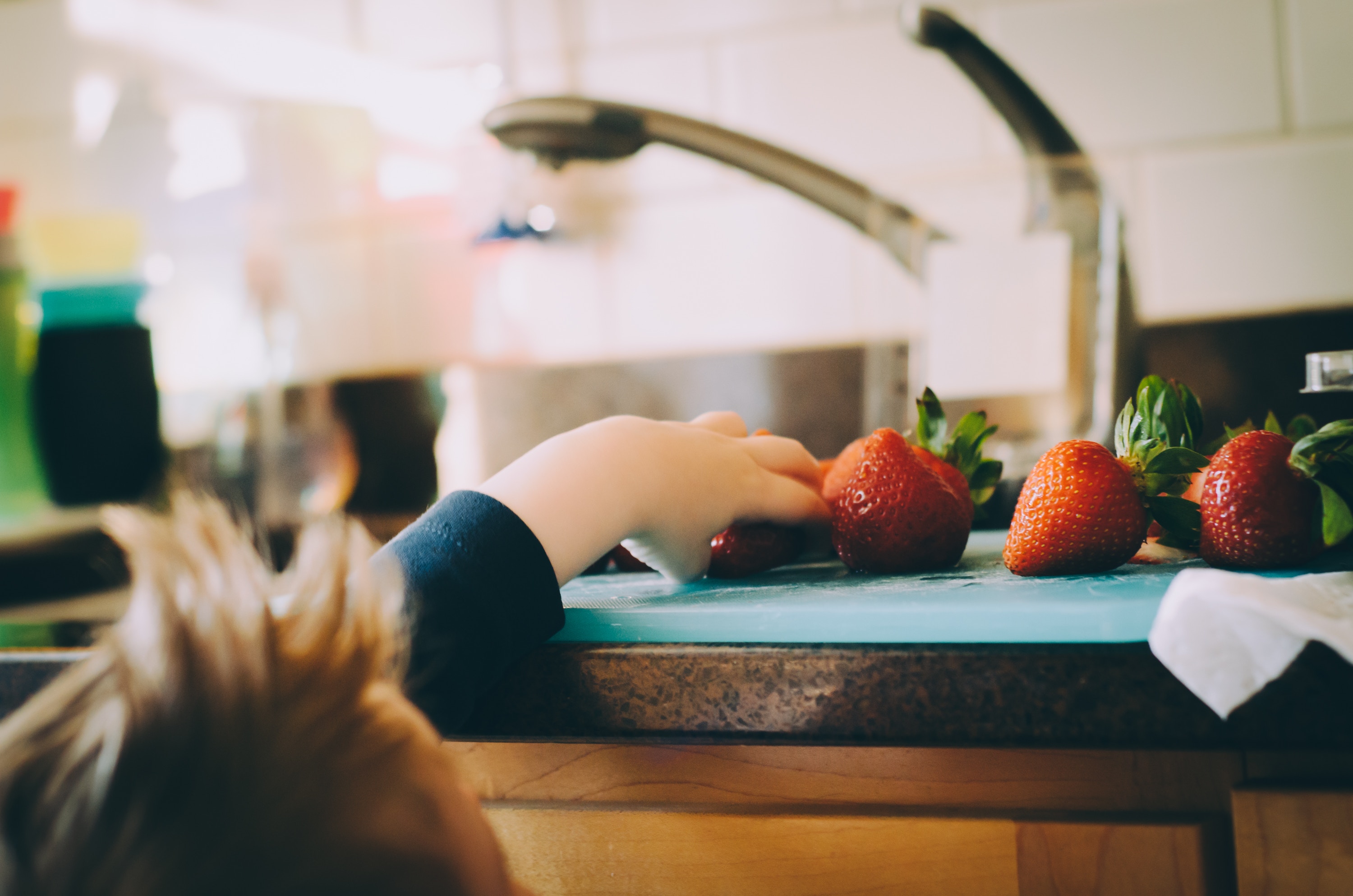It’s a fact that if your children are introduced to knowing how food is prepared and even getting involved themselves from a young age are more likely to make healthier choices throughout their lives, and is known to prevent picky eating too.
Indeed, a recent study showed that 1 in 8 British people don’t actually cook for themselves, and this figure seems to be rising as we start to rely on convenience foods, takeaways and eating out.
Introducing your children to the kitchen when young helps to build skills which will be beneficial far past the time that their childhood is past, and also leave them with fond memories too.
However, before embarking on a crusade to get your children in the kitchen, it’s vital that you first ensure that you are creating a welcoming and, above all, safe environment in which to teach your children the joys of food preparation, cooking and of course, enjoying meal times.
So read on to discover our top tips to make your kitchen child friendly.
 Avoid Sharp Edges
Avoid Sharp Edges
Remember that young children, unlike you are likely to have heads at around the same height as your worktops or kitchen cupboard handles and will not yet have developed full spatial awareness, making it easy to sustain bumps or cuts. While modern designs can be all about sleek edges, if you have very young children it may be worth considering whether a kitchen design with rounded edges may suit you better.
Additionally, choosing handleless kitchen units can be a great way to both eliminate children bumping heads on handles, and also takes away the obvious temptation that a handle must, of course, be pulled on! It may also be worthwhile to add magnetic locks to base units, though always keep dangerous items in out of reach kitchen cabinets.
Make The Kitchen Inviting For Children
If you want your children to enjoy being in the kitchen, think about ways to turn the space into a inviting, but safe environment which they will want to spend time in.
Introducing colour in the kitchen is a great way to make the space more inviting, and interestingly can even affect your children’s mood and behaviour. For example yellow is said to encourage creativity, while blue suggests calmness and security. If your kitchen is large enough, consider creating kitchen zones for different activities – bright areas for food preparation, with calmer lighting or colours in areas where your family relaxes, or children do their homework.
To bring an element of fun to kitchen proceedings, either a chalk board, or better still a wall or area painted with blackboard paint is a great way of getting the kids to engage. You can use it as a place to put up recipe ideas, chores to be done, or even use it just like in a classroom with spellings and sums!
 Keep Hot Areas Safe
Keep Hot Areas Safe
While no amount of child-proofing makes up for being vigilant, there are some steps you can take to reduce the risk from hot areas such as hobs and boiling kettles.
If possible, it can be well worthwhile to invest in an induction hob as opposed to a standard gas or electric one. This is because they are designed to heat the pots and pans as opposed to the hob itself, meaning that when you have finished cooking, once your pans are removed the hot returns very quickly to a safe temperature.
Be aware of overhanging handles of pots and pans whilst cooking, or items such as tea towels placed beneath a hot dish and hanging down over the work top which can easily be pulled. Additionally always make sure that your kettle or toaster cord is well out of the reach of your children.
Consider a “kids cupboard”
Although you need to ensure that your kitchen is a safe environment, you also want it to be a space where your children can learn and explore, taking their first steps towards enjoying cooking and food, so why not put in place a single cupboard which is just for kids!
Choose a low level base unit which is easily accessible for your children, and equip it with safe utensils, food stuffs and equipment. Include items such as your child’s favourite plastic bowls and cups, so they can set their place at the table.
Enjoy!
 More than any of the above, if you want to ensure that your kitchen is a child friendly place, make sure you’re well, friendly, when you are in it with your children! By taking appropriate steps to ensure that the space is safe, you can instead focus on enjoying time in the kitchen with your kids.
More than any of the above, if you want to ensure that your kitchen is a child friendly place, make sure you’re well, friendly, when you are in it with your children! By taking appropriate steps to ensure that the space is safe, you can instead focus on enjoying time in the kitchen with your kids.
Being relaxed in the kitchen will have a great long term effect on your children, making them feel that it’s a great place to be.
Whether you’re preparing food together, playing or dining as a family, make the kitchen the heart of your home.






